Day: 10-12 (Eparnay, Champagne Region, France)
Km travelled: 801.83 km
Steps: 28, 933
Champagne glasses: Best not to keep count...
September 16th-18th 2017
I awoke bright and early in my prison sleeper train middle bunk, ready to greet the wonderful weekend that awaited me in the Champagne region! (Correction: I awoke several times in those early hours – those sleeper trains are uncomfortable, especially after 8hrs!). A quick transfer in Paris and it was on to yet another train for the final leg of the trip.
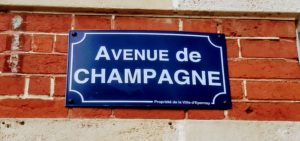
Roughing it on the overnight train did have an advantage. I arrived at my destination, Epernay, with plenty of time for a nap and a shower before friends of mine arrived for our weekend of indulgence and decadence. We done our walking shoes and headed for the ‘it’ place in town: Avenue du Champagne. That’s right folks, an entire avenue chalk full of champagne house and cellars.
Champagne is often associated with luxury, likely due to its price point and its habit of being to go-to for celebratory occasions. And nothing says luxe and grandeur quite like the godfather of champagne: Dom Pérignon et its champagne house, Moët et Chandon. A Benedictine monk in Hautvillers (Champagne Region), Dom Pérignon was a cellar master at the abbey who was a pioneer of the wine / champagne process. He is said to have exclaimed ” Come quickly! I have tasted the stars!” at the moment he first tasted champagne. Today, his name is iconically linked to prestigious (and expensive!) champagne. He is buried in a church at the site of the original abbey, his grave regularly visited by tourists.
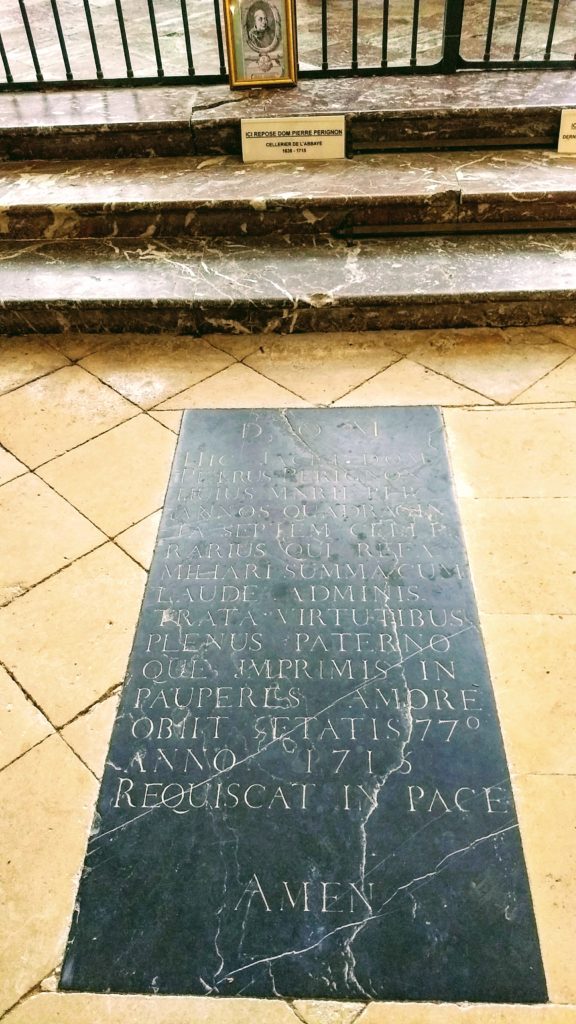
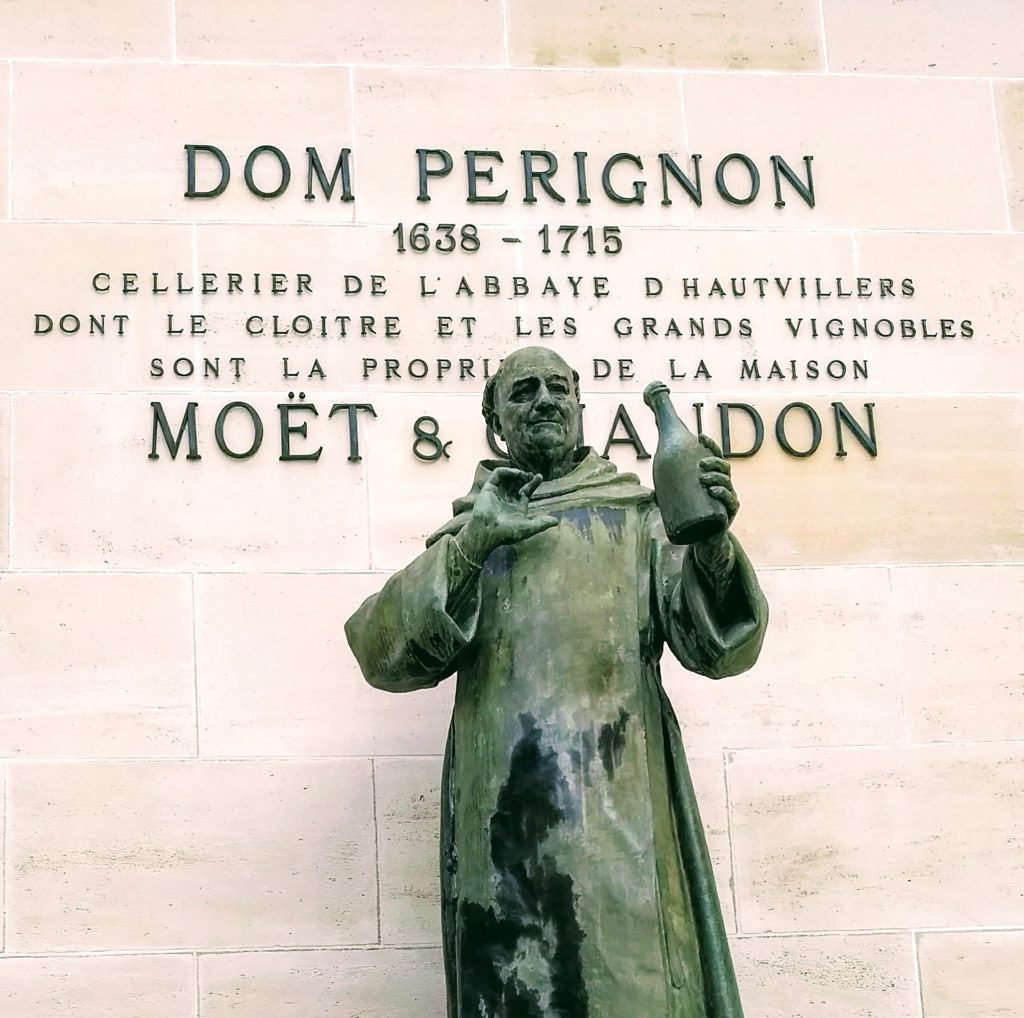
A guided tour of cellars had us learning all about the champagne making process. A sparkling wine can only call itself Champagne if it meets specific criteria: harvest is done by hand, not machines; grapes are sourced exclusively from the champagne region and only 3 kinds are utilized (pinot noir, pinot meaner & chardonnay); specific fermentation techniques are followed. It is then designated ‘Appellation d’Origine Controlée” or AOC. There are also different types of champagne, something I didn’t actually realize before the visit. While I was aware of the different sweetness of champagne (brut, demi, sex, etc), I pleasantly discovered different types such as blanc de blancs and blanc de noir, to name a few. Another pleasant discovery were the different sizes of bottles. While I’ve seen my share of full, half and magnum bottles, not even in my wildest dreams did I imagine the plethora of bottle sizes that awaited me! Now if only I could afford the choices…
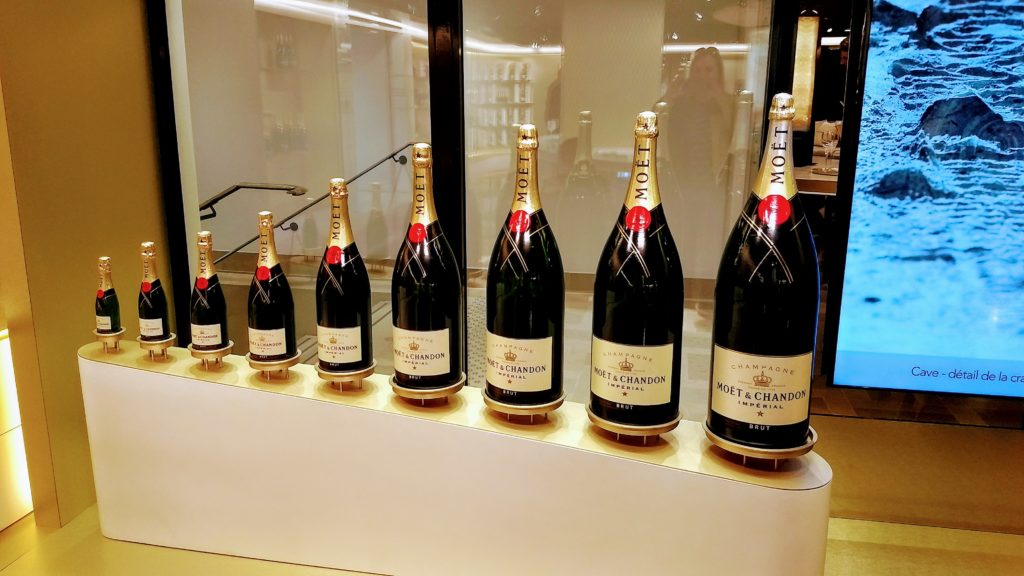 Left to right: quarter (0.1875 litre), half (0.375 litre), full- the typical size just for reference (0.75 litre), Magnum (1.5 litres), Jeroboam (3 litres), Methuselah (6 litres), Salmanazar (9 litres), Balthazar (12 litres) – woah baby!
Left to right: quarter (0.1875 litre), half (0.375 litre), full- the typical size just for reference (0.75 litre), Magnum (1.5 litres), Jeroboam (3 litres), Methuselah (6 litres), Salmanazar (9 litres), Balthazar (12 litres) – woah baby!
The cellar tour revealed rows upon rows of champagne bottles, maturing in the cold, dark cellars. It took great self-control not to pull out a bottle on the spot!
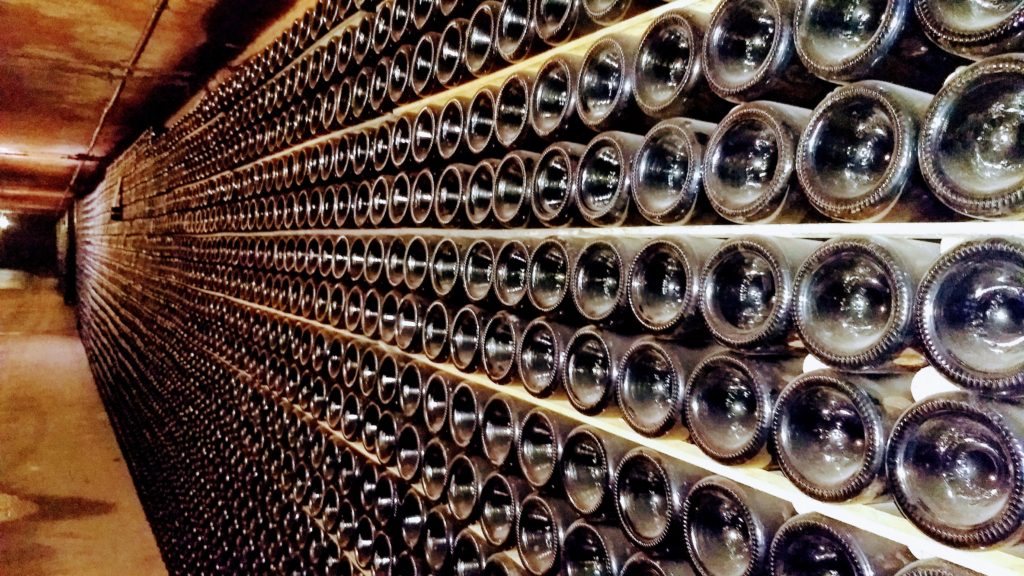
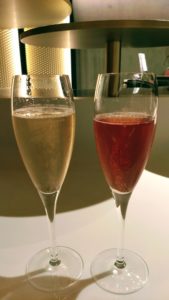

The highlight of the tour: the end! What’s a better way to cap off a visit to the world’s most iconic champagne brand then by tasting the fruit of its delicious efforts? Why, by tasting two, of course! (What? It’s 5 o’clock somewhere…). And like any worthwhile tour, the exit is conveniently located through the gift shop. Lucky for me (and my wallet), I was prevented from splurging on Swarovski enhanced bottle by the limited space in my backpack. Maybe next time!
My Christmas present I sadly left behind Moët Impérial and Moët Rosé Impérial
The remainder of the day was spent somewhere that I rarely visit when traveling: the tourist office. Those that know me can attest that I am fiercely independent and my attitude when traveling is usually ‘I can figure it out myself’. Luckily for me, however, one of my travel companions always visits these centres and has the ability to charm the clerks, as we were made aware of a free champagne tasting there in the afternoon. My two favourite words: free & champagne. Can life be any sweeter? 2 local champagne house were present to showcase their products and we were delighted to oblige. This tasting was promptly followed by a much-needed supper outing at a local restaurant. A hearty meal of carbonara pasta was just what was needed at the moment and fortified me for the walk back to the hotel. And our course, one cannot simply go to bed when in Epernay, one must have a night-cap to off a delightfully indulgent day in the heart of the Champagne region.
We set off early on the second day with the goal of visiting the ‘Musée du Champagne’ in Le Mesnil-sur-Oger (Champagne Launois Père et Fils). Spectacular landscapes of rolling hills, sprawling vineyards and quaint country houses unfolded before our eyes after only a short drive into the countryside. Arriving at the museum / champagne house ahead of schedule allowed us the opportunity to wander around the town and examine some vineyards up close. In the quiet of the morning, with a slight fog rolling in and the suns rays beginning to beam down, I took the time to breath in the moment. The smell of the air – earthy, cool and crisp. The plethora of colours dancing in the shimmering sun – greens and browns and blues. The sounds of the gentle breeze and morning insects – like a quiet, soft symphony announcing the day. This was a moment to remember. This was a moment filled with quiet anticipation, growing slowly and steadily. This was a moment before what you know would be an amazing day! (and imagine, this was even before the champagne tasting!)
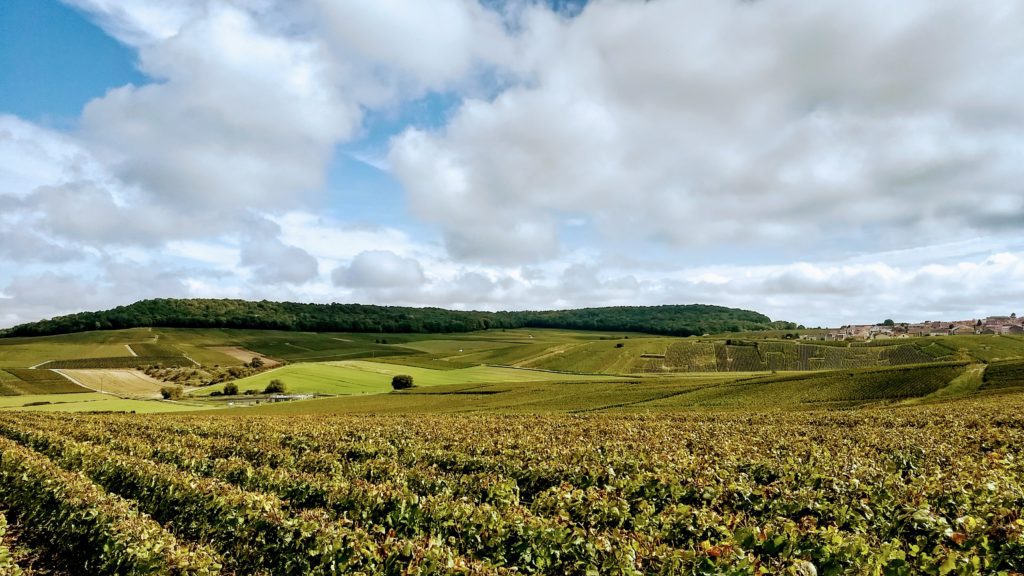
The museum was a fascinating journey through time and through one eccentric man’s collection. An information packed tour and several cellars chalk full of champagne related / non related collectible filled the next hours of our time. Some memorable tidbits:
- Champagne bottles were historically handblown however it was impossible to keep up with the demand. Therefore, the bottles were re-used up to 6-7 times. After every exposure to the atmospheric pressures required to put the bubbles in the bubbly, the glass would weaken and often lead to spectacular explosion of wine and glass. As much as 50% of the year’s reserve could be lost! Today, bottles are moulded and each house designs their own unique bottle shape.
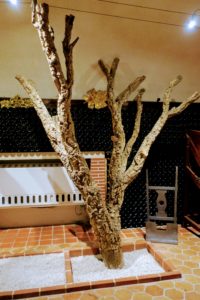
- wine corks are the phellem layer (not to be confused with phlegm, my dear hospital friends) of bark tissue from a ‘cork oak’ tree. It takes 25-30 years of maturity before the first harvest can be done and subsequent harvests occur every 9-13 years!
- there was a somewhat salacious poster and accompanying legend regarding Madame de Pompadour, the influential mistress of Louis XV and her connection to the origin of the champagne coupe. She was Claude Moët most loyal customer who famously proclaimed “Champagne is the only drink that leaves a woman still beautiful after drinking it”. It is said that the coupe was moulded from a certain part of her anatomy.. I’ll let the curious souls look that one up on their own.
- there is another drink made in Champagne from the byproduct of the champagne making process – mainly the juice of the grapes after the third or fourth pressing. Ratafia de Champagne is a sweet liquor made from the same 3 grapes that make champagne and is often mixed with either brandy, herbs or other selected fruit juices. Enjoyed as an apéritif or digestif, it’s popular in France, Spain and Italy, it is relatively unknown in North America – something I vowed to change! (as I write this, I am enjoying a delectable glass of this sweet essence of life!)
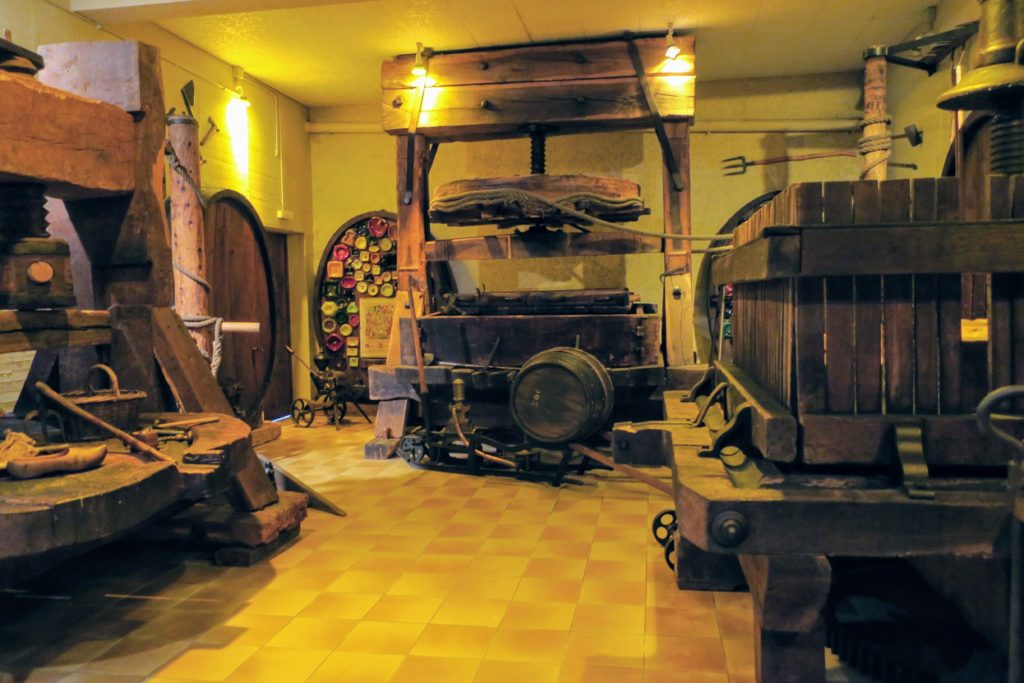
Again, the visit ended with a tasting, this time we had the opportunity to sample three of the house’s celebrated champagnes, each one more as delicious as the next. I was become quite the connoisseur by now, if I do say so myself!
Ancient grape presses
The rest of the day was spent driving through vineyards, visiting smaller champagne houses and sampling even more bubbly! The beauty of the terrain is almost indescribable and best left to the eye of the beholder.
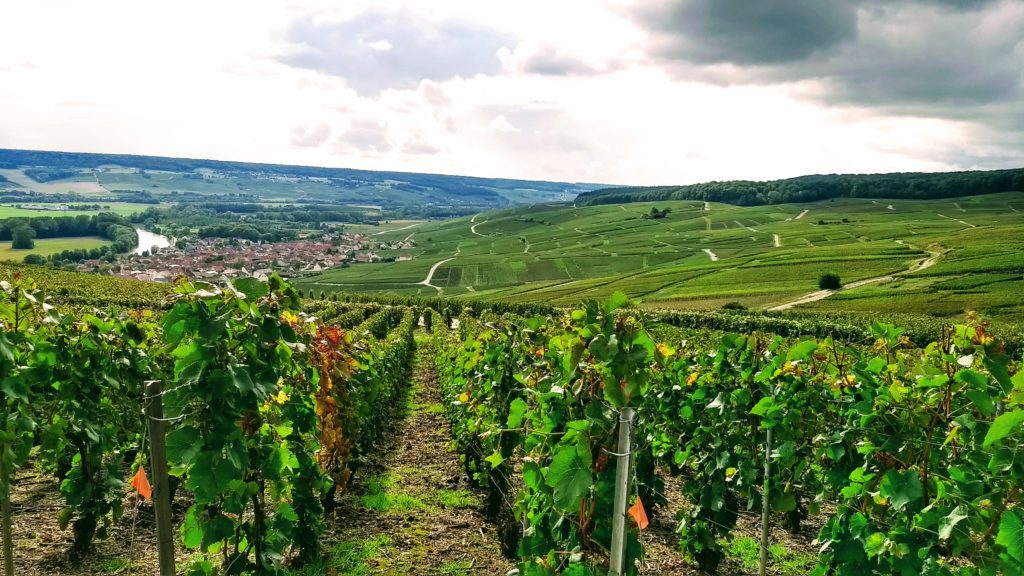

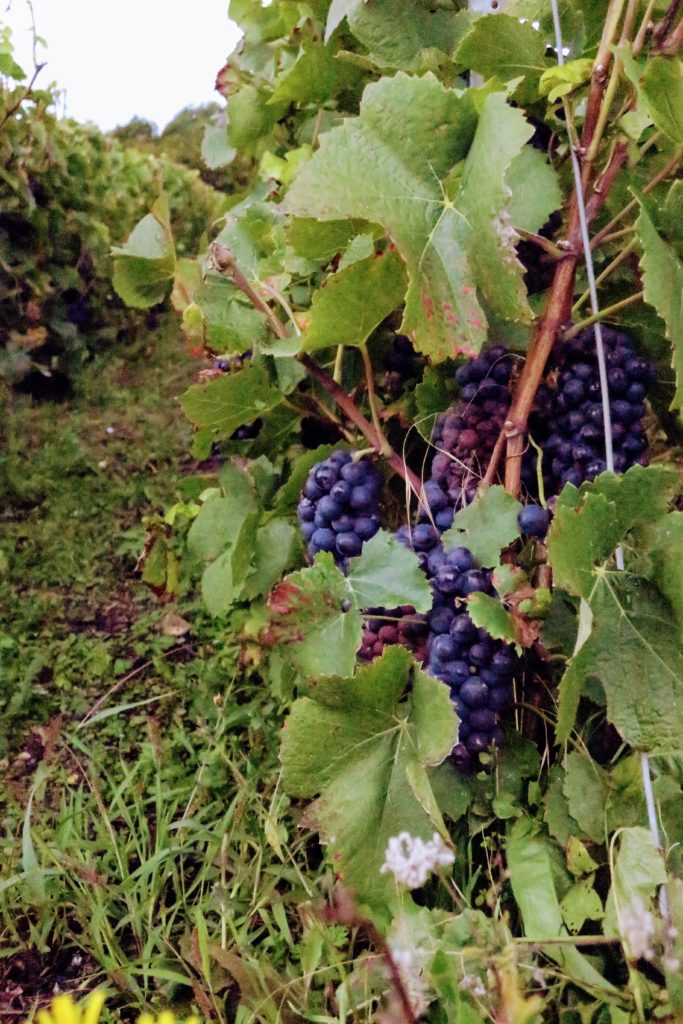
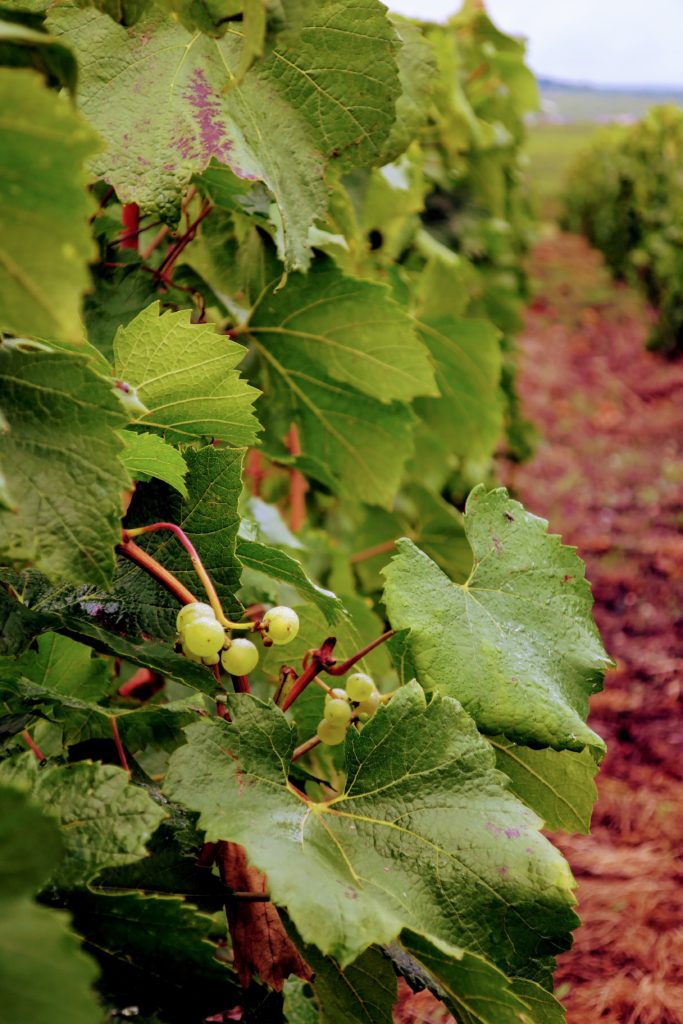
Pinot Meunier grapes Chardonnay grapes
Another day of lavish indulgence was coming to an end but not before sampling a bit more of the local flavour!
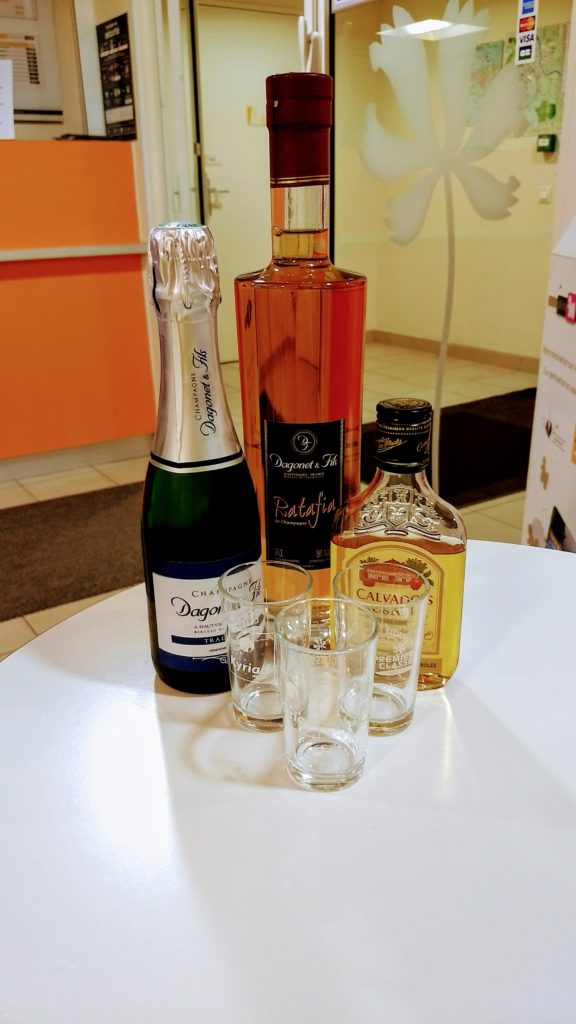 Champagne, Ratafia de Champagne & Calvados (from Normandy)
Champagne, Ratafia de Champagne & Calvados (from Normandy)
